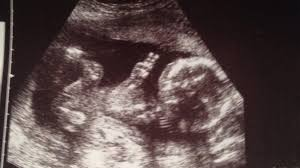sensitive to faces and face-like patterns
Viewing deals with in items
The scientists contrasted 2 teams of ladies on an examination of deal with pareidolia. One team were actually expecting while the various other team possessed delivered in the final year. Throughout the examination, every one of the ladies were actually revealed 3 kinds of pictures: individual deals with, regular items as well as illusory deals with (items along with face-like designs in all of them). The ladies were actually inquired towards react to the pictures utilizing an 11-point range coming from no (no, I do not view a deal with) towards 10 (indeed, I certainly view a deal with).
The outcomes revealed that the postpartum ladies performed certainly record viewing much a lot extra deals with for the illusory deal with pictures (average reaction was actually 7.08) in contrast along with the expecting ladies (average reaction of 5.30). As anticipated, these teams really did not vary a lot in their reactions towards the pictures of individual deals with as well as regular items.
The writers wrapped up that women's level of sensitivity towards degrees of deal with pareidolia might be actually increased throughout very early being a parent, as well as may motivate social bonding, which is actually certainly essential for moms as well as their babies. This enhance in level of sensitivity, inning accordance with the scientists, is actually triggered by increased degrees of oxytocin in the months after providing birth.
The writers of the examine kept in mind that they really did not really determine their participants' oxytocin degrees. Rather, they presumed oxytocin distinctions triggered the distinctions in deal with pareidolia.
sensitive to faces and face-like patterns
Nevertheless, this implies various other distinctions in between both teams might have actually resulted in their outcome. Possibly expecting as well as postpartum ladies vary in their degrees of stress and anxiousness, tension, or even tiredness, every one of which might impact their efficiency on the job.
It might likewise be actually that expecting as well as postpartum ladies that decide to finish on the internet psychology experiments vary somehow that we're certainly not familiar with. Performing a follow-up examine which contrasts the exact very same ladies while pregnant as well as after they've delivered might guideline out a few of these options.
There's likewise one more issue along with presuming that oxytocin distinctions underlie the deal with pareidolia outcome. While the study's writers factor that oxytocin degrees will certainly be actually greater postpartum compared to while pregnant, this concept isn't really plainly sustained through previous research study.
As a matter of fact, some research researches appear towards reveal that oxytocin degrees do not vary coming from maternity towards postpartum, are actually reduced postpartum, or even that they increase while pregnant however after that drop throughout the postpartum duration. At the minimum, these research researches appear towards concur that ladies differ significantly in the designs they reveal.
Some greater than others
While the Australian examine concentrated on expecting as well as postpartum ladies, we understand that many people expertise viewing face-like designs. Nevertheless, certainly there certainly are actually big distinctions in exactly just how vulnerable you may be.

.jpg)

